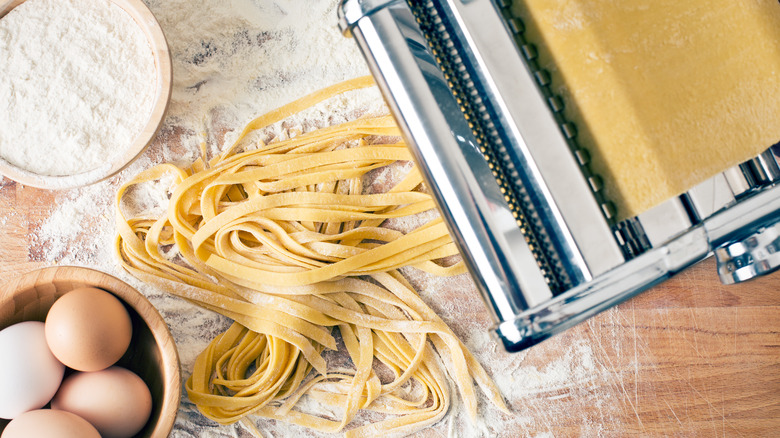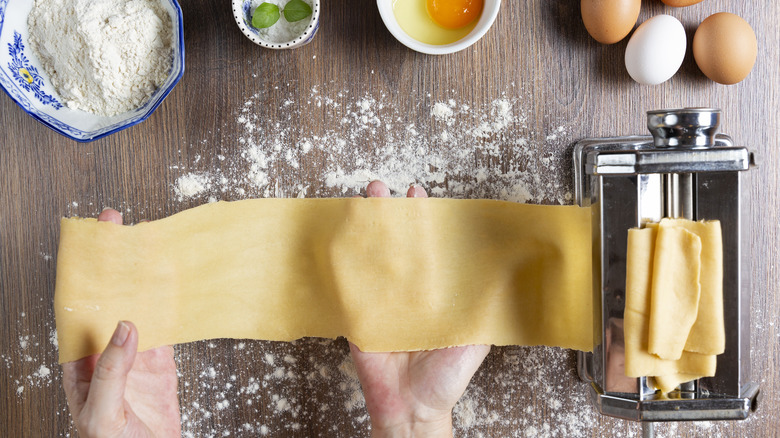The Biggest Mistake You Can Make With A Pasta Maker Is Washing It
Learning how to cook fresh pasta at home is especially rewarding and can be done with relative ease as long as you've got the right equipment (a pasta maker) and three simple ingredients (flour, eggs, and salt). Whether you choose to take on traditional or more elaborate shapes, making pasta from scratch will elevate classic recipes. For this, pasta makers are the best sous chef. And like any sous chef, properly caring for it is the key to keeping it around for a long time. That means forgetting everything you've learned about washing dishes.
After churning out silky sheets of fresh pasta, there are often pieces of hardened dough and flour dust all over the machine, including in its nooks and crannies. While it may seem intuitive to give your device a good wash with soap and water — or even place it in the dishwasher to clean it — this is absolutely not the way to go.
How to properly clean a pasta maker without water
One of the most common and unfortunate mistakes people make is washing their pasta maker. Because they are made of metal and contain small, intricate parts (including rollers, cutters, and clamps), introducing water to your pasta machine can cause it to get stuck in its crevices, ultimately causing the machine to rust. This can ruin the machine and result in rusty particles in your future pasta sheets, which, needless to say, is not what anyone wants to eat.
Instead, when cleaning your pasta maker, disassemble the machine according to your appliance's manual to properly remove any detachable parts, clamps, and screws. Then with a soft dishcloth, carefully brush away any stuck pieces of pasta dough on the outside of the machine and each individual part. Use a small brush or toothpick to clean the remaining crumbs and dust in the crevices between pasta rollers and other small, hard-to-reach areas.
For good measure, you can take a barely damp towel to give the outside a final polish once it's put back together. Be sure to dry the machine after so it's good as new the next time you use it.
Removing extra pesky bits between rollers
If your pasta maker's rollers don't come apart, you'll need to add an extra step before cleaning. Some pasta professionals (and home cooks alike) recommend using polymer clay or leftover scrap pasta dough to press and remove any especially stubborn stuck bits. You can also take a flattened disk of scrap dough and pass it through the machine on the widest setting, using the hand crank to press it through the rollers, just like you would when preparing your pasta sheets.
Repeat this process four to five times, starting on the widest setting, then gradually decreasing the thickness until you reach your machine's thinnest setting. During the process, you'll notice that your dough catches some dried pasta pieces, which is precisely what you want. Once that step is finished, you're ready to clean your pasta maker like a pasta pro, all without any soap or water.


